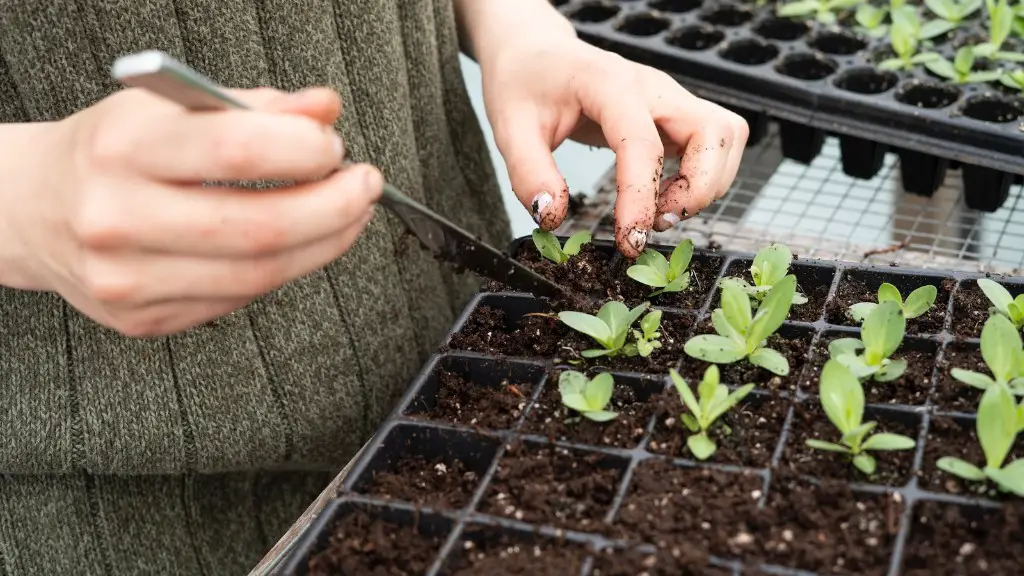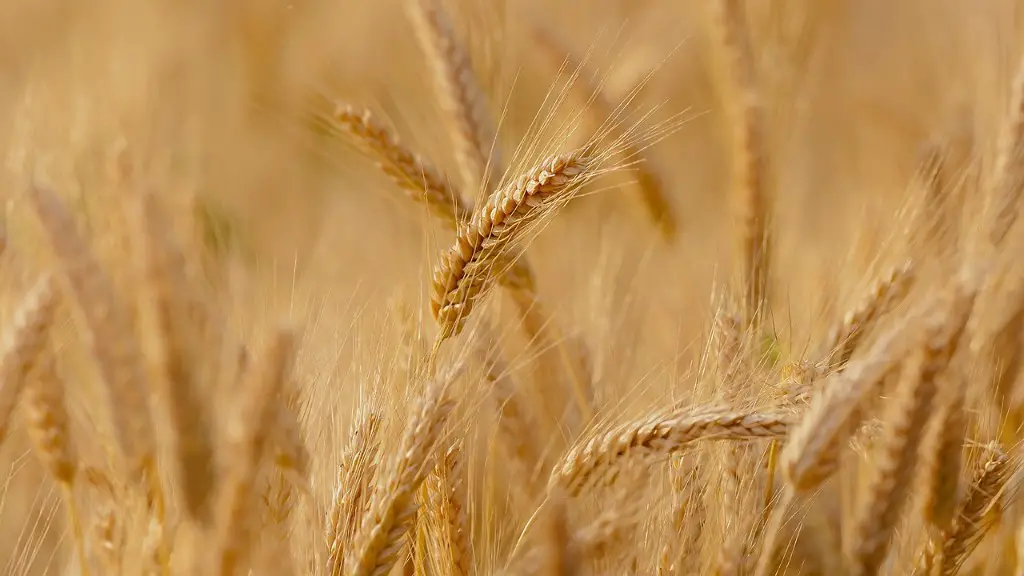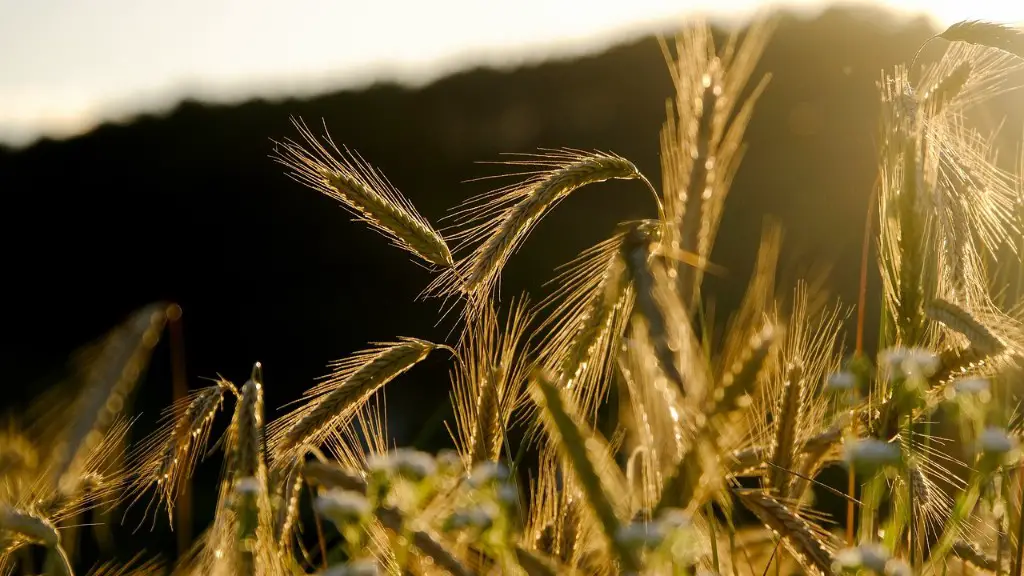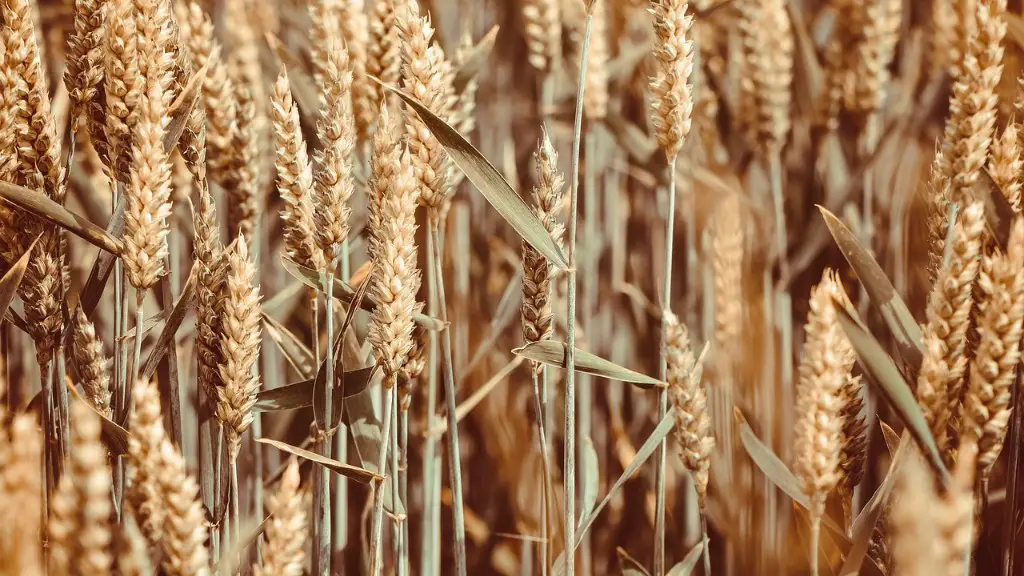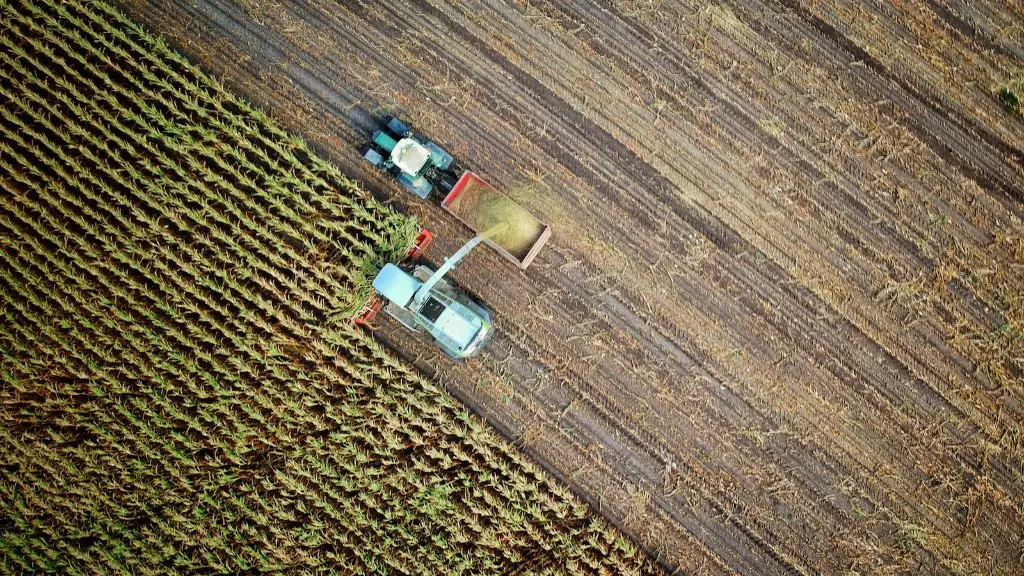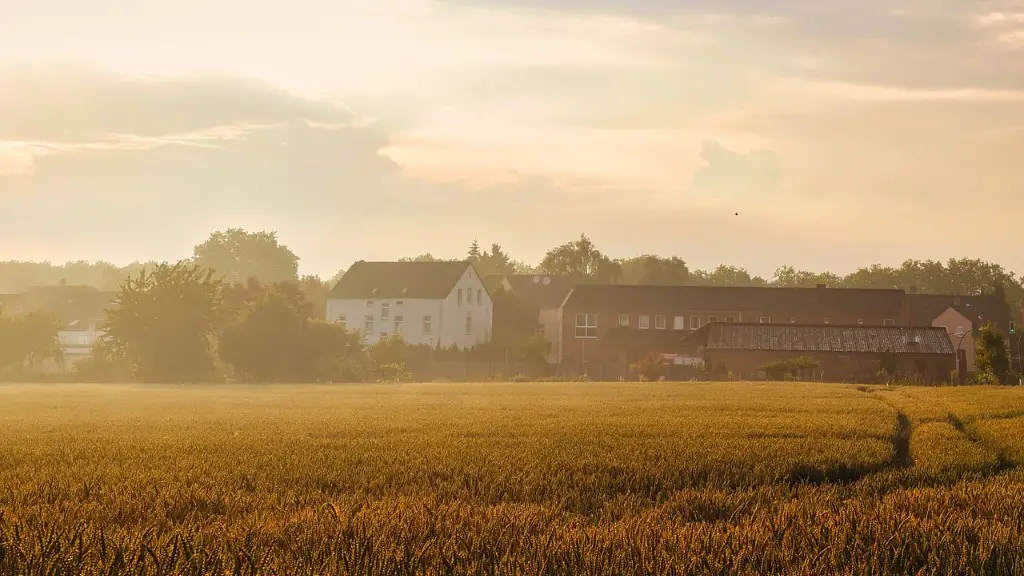Regenerative agriculture can be described as an approach to food and farming systems that focuses on rebuilding natural ecosystems and improving human communities. Based on principles of ecology, regeneration, and social justice, regenerative agriculture offers a powerful way to create a more sustainable and equitable food system. While there is no one-size-fits-all model for regenerative agriculture, key practices include building healthy soils, diversifying crop rotations, using cover crops and green manures, and integrating livestock. These practices work together to regenerate soils, restore ecosystem health, and build resilience to climate change. In addition to the environmental benefits, regenerative agriculture also supports the well-being of farmers and farmworkers, enhances food security, and contributes to thriving local economies.
There is no one answer to this question as regenerative agriculture practices can vary depending on the farm or ranch. However, common regenerative agriculture practices include things like using cover crops, crop rotation, and minimum tillage. These practices help to improve soil health, which can in turn lead to increased crop yields and improved water and air quality.
What are examples of regenerative agriculture?
Regenerative agriculture is an approach to food production that focuses on rebuilding and regenerating natural systems. It is based on the principles of ecology, and aims to create a more sustainable and resilient food system.
Cover crops are one of the key practices of regenerative agriculture. They are plants that are grown to cover the soil, and help to improve soil health by protecting it from erosion, increasing its organic matter content, and providing nutrients for future crops.
Minimal soil disturbance is another important practice. This means avoiding practices that compact or disturb the soil, such as tilling. Instead, farmers may use no-till or strip-till methods, which leave the soil undisturbed.
Diversified crop rotations are another key practice. This means growing a variety of different crops in a given area over time, rather than growing the same crop in the same place year after year. Crop rotation can help to improve soil health, reduce pests and diseases, and increase crop yields.
Field buffers and perennial plant strips are also important practices. Buffers are areas of land that are planted with grasses or other plants to help reduce soil runoff and erosion. Perennial plant strips are strips of land
Cover crops and crop rotation are two of basic principles of sustainable agriculture that lead to greater biodiversity. By planting a diversity of crops, farmers can create a more resilient and productive ecosystem that is better able to withstand pests, diseases, and extreme weather conditions.
Tillage is a major contributor to soil erosion, so reducing or eliminating it can help to conserve and improve soil health. No-till farming systems can be implemented using a variety of methods, including the use of cover crops, mulch, and crop rotations.
The use of artificial fertilizers can lead to soil degradation and pollution, so it is important to use them sparingly.Farmers can promote soil health by using organic matter such as compost and manure to fertilize their crops.
Regenerative grazing management is a holistic approach to livestock husbandry that focuses on rebuilding soil health and promoting plant growth. By using rotational grazing systems and managed grazing practices, farmers can improve the health of their pastures and the animals that graze on them.
What are 3 types of regenerative agriculture
These incentive programs are designed to promote and support sustainable agricultural practices in California. The programs provide funding for farmers to implement conservation methods that improve soil health, water quality, and habitat for wildlife. The programs also support research on new sustainable agriculture practices and education for farmers and the public.
Regenerative farming is a system of agriculture that focuses on rebuilding the soil and restoring ecosystems. The 5 principles of regenerative farming are:
1) Soil Armor: Soil armor is a layer of living plants and roots that help protect and regenerate the soil.
2) Diversity: Diversity is key to a healthy ecosystem and regenerative farming system. A diversity of plants, animals, and microbes helps to build soil health and resilience.
3) Continual Live Plant/Root: Regenerative systems include a continual live plant or root in the soil to help build soil health and reduce erosion.
4) Livestock Integration: Livestock can be integrated into a regenerative system to help build soil health and add fertility.
5) Minimizing Soil Disturbance: Minimizing soil disturbance helps to protect soils and reduce erosion.
What does a regenerative farm look like?
Regenerative farms are those that focus on rebuilding and restoring the soil. They may use techniques such as crop rotations, cover crops, and permanent vegetation to achieve this. By keeping living roots in the soil, they can help to improve the soil structure and fertility.
By not tilling the soil, farmers can save between 30 and 40 percent of time, and can decrease the amount of soil erosion in certain terrains. The disadvantages of regenerative agriculture are, in many cases, that more unwelcome plants grow on the land, and some farmers compensate for this by increasing their use of herbicides.
What is the primary goal of regenerative agriculture?
Regenerative agriculture is a type of farming that emphasizes the importance of soil health. One of the primary goals of regenerative agriculture is to reduce tilling in order to promote healthy soil. This is because tilling can disrupt the natural phenomena of nutrient absorption by the plants and create disequilibrium of soil microorganisms. Regenerative agriculture also does not involve the use of synthetic fertilizers because they can also disrupt the natural balance of the soil.
Sustainable practices are those that seek to maintain systems without degrading them. This usually involves trying to use resources efficiently and responsibly, and minimising waste and pollution. Regenerative practices go one step further, and aim to restore systems to improved productivity. This often means using techniques such as permaculture, which focuses on creating sustainable ecosystems.
What are the disadvantages of regenerative farming
There are many advantages to regenerative agriculture, including saving time and reducing soil erosion. However, there are also some disadvantages, such as more unwanted plants growing on the land. Farmers may need to increase their use of herbicides and other chemicals to combat these unwanted plants.
Conventional agriculture has a number of negative impacts on the environment. Plowing disturbs the soil and releases carbon into the atmosphere. Using synthetic fertilizer and chemical pesticides can degrade the soil and pollute waterways. Growing the same crop year after year can decrease the soil’s fertility and lead to soil erosion.
What are the 7 types of agricultural practices?
Pastoral farming is the primary form of agriculture in many localities. It involves the raising of livestock for meat, milk, and wool. Arable farming is the cultivation of crops, usually for food. Mixed farming is a combination of both pastoral and arable farming. Taungya farming involves the planting of trees and shrubs in cleared forest areas. Fish farming is the raising of fish in tanks or ponds. Livestock farming is the raising of livestock for meat, milk, or wool. Shifting cultivation is a form of agriculture in which farmers clear a piece of land and cultivation it for a few years until the soil becomes depleted, at which point they move on to a new piece of land. Land rotation/bush fallowing is a form of agriculture in which farmers rotate the crops they grow in a given field in order to maintain the fertility of the soil.
The goal of sustainable agriculture is to protect and improve the environment while also providing economic benefits. This can be done by using practices that minimize soil erosion, conserve water, and improve soil health. Farmers can also choose to grow crops that require less chemical inputs and use more sustainable methods of production. In addition, sustainable agriculture strives to provide social and economic benefits to farmers and their communities. This includes providing safe working conditions and fair wages, as well as ensuring that farmers have access to the resources they need to be successful.
What is the difference between regenerative farming and organic farming
Regenerative farmers use holistic management and decision making to manage complexity on the farm. They use no till practices and minimize soil disruption to regenerate the land. Organic agriculture attempts to reduce complexity by managing living things as if they were only complicated and machine like.
Fertilizer is an important tool in regenerative agriculture, but it should be used judiciously in order to rebuild soil biology and reduce the need for fertilizer over time. By using fertilizer wisely, we can help regenerate our soils and create a more sustainable and productive agricultural system.
Can you do regenerative agriculture without animals?
There are a number of vegan-aligned brands that are commited to regenerative farming. Milkadamia, a plant-based brand known for its non-dairy milk products made from macadamia nuts, is one example. Regenerative agriculture is not exclusive to livestock farming, but rather can be practiced with a variety of crops. By supporting brands that employ these sustainable practices, we can help to heal and restore our planet.
Regenerative farming is a great way to farm without tilling the land or using pesticides and herbicides. By keeping the soil covered with cover crops and/or hay/mulch/leaves, you can help keep the soil healthy and improve water infiltration and reduce erosion.
Does regenerative agriculture use less water
Regenerative agriculture is a type of farming that focuses on rebuilding soil health. This is done through practices like cover crops, no-tillage, and diversified crop rotations. One of the benefits of regenerative agriculture is that it can help reduce water use.
It is possible to reverse climate change by sequestering more carbon than is currently emitted. This can be done by using cover crops, compost, crop rotation and reduced tillage. Cover crops can be used to improve soil health and help sequester carbon. Compost can be used to improve soil health and sequester carbon. Crop rotation can be used to improve soil health and help sequester carbon. Reduced tillage can be used to improve soil health and help sequester carbon.
Warp Up
There is no one-size-fits-all answer to this question, as the specific regenerative agriculture practices used will vary depending on the specific agricultural system in question. However, some common regenerative agriculture practices include things like using cover crops and crop rotation to improve soil health, as well as using alternative livestock grazing strategies to improve pasture health.
Regenerative agriculture is a set of farming practices that aim to regenerate the soil, while also sequestering carbon and producing food. When compared to conventional farming practices, regenerative agriculture has been shown to improve soil health, increase crop yields, and reduce water usage. Additionally, regenerative agriculture can help to mitigate climate change by sequestering carbon in the soil.
